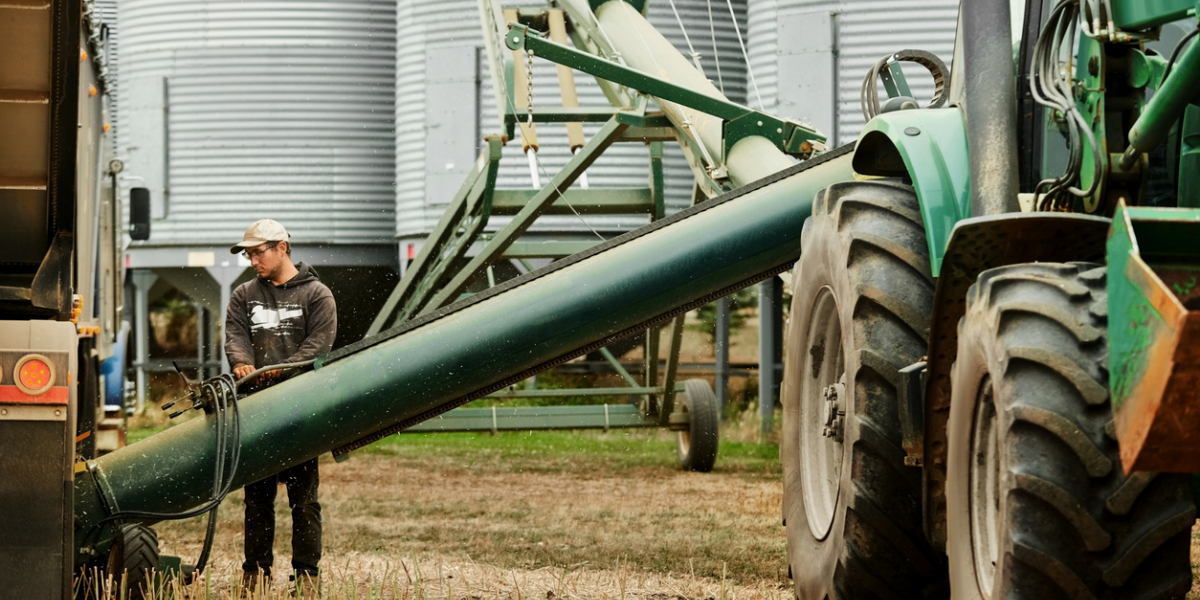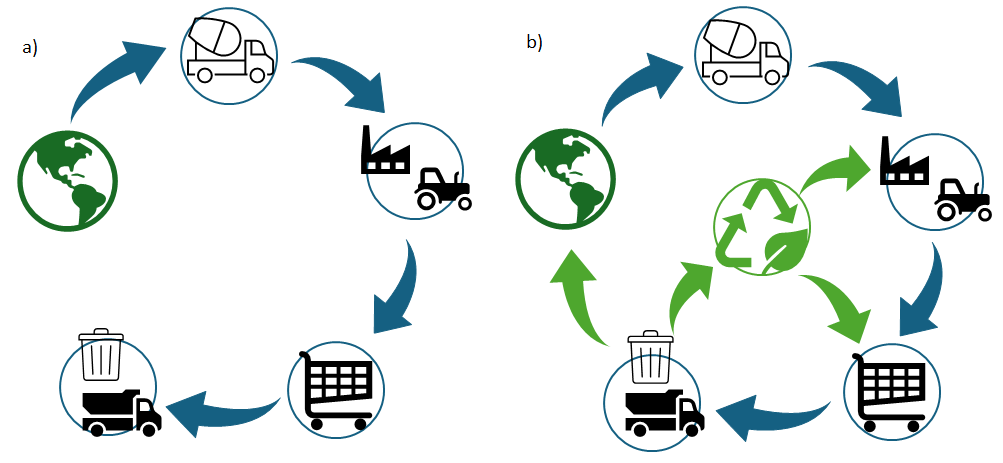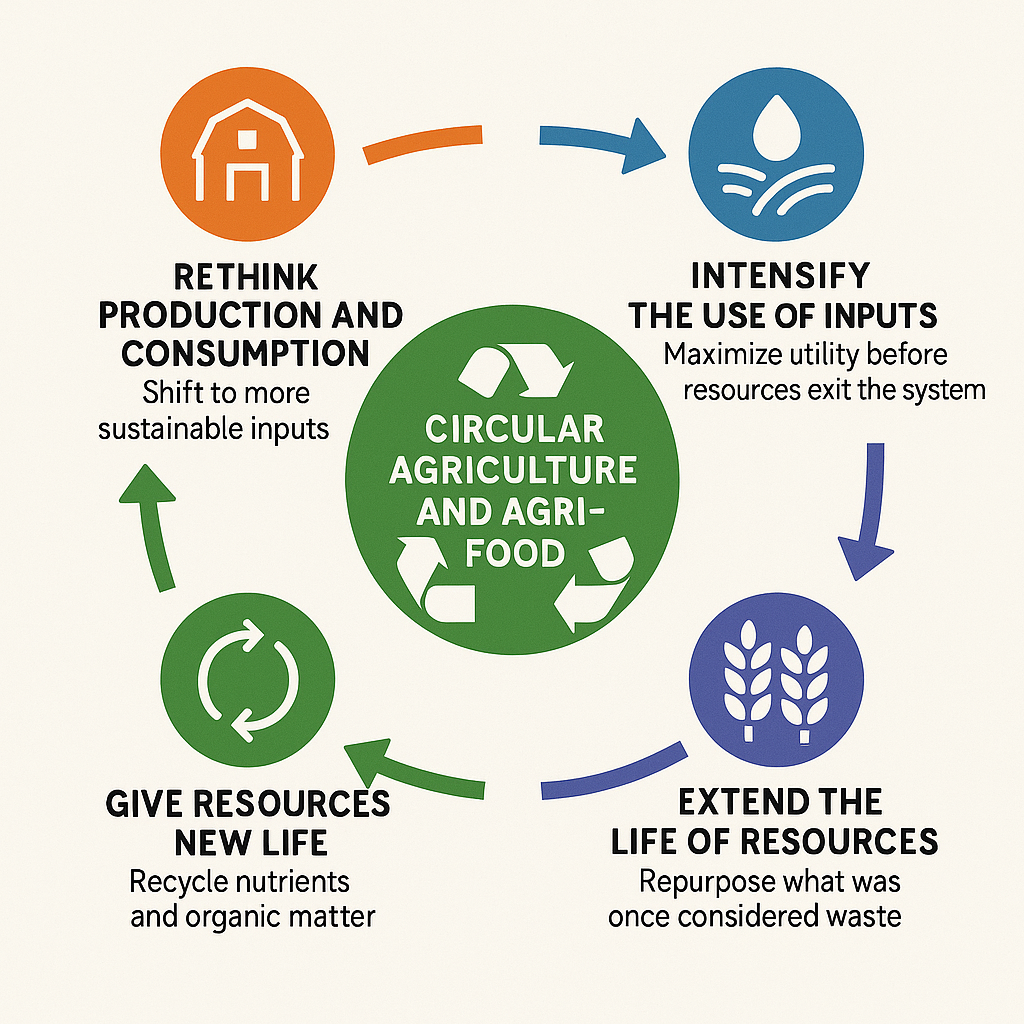
August 19, 2025
Canada’s agriculture and agri-food sector stands at a crossroads. Producers are under mounting pressure from rising input costs that squeeze their profits, unpredictable weather patterns that harm their crop yields and tighter rules to protect the environment, which can increase yields and lower costs but cost money upfront. The sector is also expected to keep producing high-quality, affordable food and help Canada meet its climate and biodiversity targets.
This situation presents a sobering reality: the loss of food, nutrients and resources at every stage of the supply chain is unsustainable.
One way forward is to cut waste and make better use of what farms already have. This is what we call a circular-economy model. In this kind of economy we reuse nutrients, turn waste into valuable products and find ways to get more out of each acre without using more inputs.
Far from being a passing trend, a circular, agriculture and agri-food economy takes practical steps to benefit the sector, including:
By rethinking how we grow, process and market food, we can build a farm and food system that is more profitable, less wasteful and better prepared for the future.
A circular agriculture and agri-food sector in Canada reimagines how we produce, process and consume food. Unlike linear economic models in which materials go from production to consumption then disposal, circular economies prioritize the reuse, repurpose and reintegration of resources (Figure 1).

Figure 1, Visual representation of linear (a) versus circular (b) economic models. Adapted from Okorie et al., 2018.
According to the Smart Prosperity Institute’s 2021 report A Circular Agriculture and Agri-Food Economy for Canada, circular practices on the farm cut costs and improve revenues while helping to restore soil health, reduce waste and emissions, and extend the lifespan of agricultural inputs.
The report breaks down more than 30 farm-level practices and 13 strategic approaches into four goals to foster circularity in agriculture and agri-food (Figure 2):

Figure 2, Key objectives for Canada's circular agricultural and agri-food economy. Adapted from SPI 2021.
Adopting a circular agriculture and agri-food model offers Canada a triple dividend: economic resilience, environmental sustainability and social well-being.
Economic benefits
Circular systems reduce costs and create new revenue streams by recovering valuable nutrients, such as nitrogen and phosphorus, from agricultural and municipal waste. In a country that relies heavily on imported fertilizers, local nutrient recovery can lower input costs for farmers while protecting the sector from unpredictable global prices.
New business models can emerge around transforming agricultural byproducts into marketable goods from organic compost and biochar to inputs for bio-based packaging or biofuels. These innovations can diversify rural economies and expand opportunities along the value chain.
Environmental benefits
Closing nutrient loops reduces pollution, particularly phosphorus and nitrogen runoff, into critical freshwater systems like Lake Winnipeg and the Great Lakes. Circular practices, like using compost, digestate or co-composted mineral-organic fertilizers can enhance soil organic matter, improve water retention and support long-term soil health. By reducing the need for inefficient rock phosphates or synthetic inputs, these practices can also lower the risk of nutrient leaching and agrochemical contamination.
Social benefits
Circularity strengthens food security and community resilience. Redirecting surplus food, investing in regional processing for upcycled goods and harnessing underused biomass ensure resources serve people, not landfills. These approaches can also foster local employment, reduce the public’s exposure to agricultural pollutants and support healthier, more sustainable food systems.
Circular models in agriculture and agri-food are not just theoretical; they are being piloted and tested across Canada. Examples include:
1) Repurposing waste into bio-inputs
Research shows that biopesticides derived from fruit, vegetable and grain residues can offer eco-friendly alternatives to synthetic chemicals. Firms are also exploring the use of food waste to raise black soldier fly larvae, which are processed into protein-rich animal feed.
2) Converting forestry waste into biochar
Pilots such as the Lil’Wat Forest Ventures and West Chilcotin Forest Products show the growing economic feasibility of converting low-value forestry residue into biochar while researchers across Canada continue to explore the potential of using biochar as a soil amendment to enhance carbon storage and crop yields.
3) Diverting waste into fertilizer
Researchers and farmers are blending recycled biosolids – including frass, digestate and struvite – to produce customized fertilizers that improve nutrient availability and reduce leaching.
One example of nutrient recovery is the precipitation of struvite from municipal wastewater; struvite crystals (magnesium ammonium phosphate) have potential as a phosphorus-rich plant fertilizer. Researchers at the University of Manitoba have demonstrated that struvite applied at a relatively high rate can be an effective phosphorus source for wheat and alfalfa-based forage under organic management, however, benefits were often delayed to subsequent years due to the slow rate of phosphorus release.
This research has continued as part of Organic Science Cluster 4 where Drs. Joanne Thiessen Martens and Henry Wilson are evaluating the impact of several nutrient-rich waste products, including struvite, on crop productivity and the environment. Using a novel approach, they are co-composting organic waste materials together with mineral waste materials; their goal is to develop a safe, slow-release phosphorus-fortified fertilizer that meets organic certification standards, increases the efficiency of phosphorus use and contributes to regenerative soil practices.
By linking urban waste recovery with sustainable on-farm inputs, their research aims to close a critical nutrient loop between cities and farms, advancing a truly circular, Canadian-grown solution for organic nutrient management.
While the benefits of shifting to a circular agriculture and agri-food economy are increasingly clear, a successful transition will need to overcome barriers to unlock its full potential in Canada:
Canada’s agriculture and agri-food system is approaching a critical inflection point. Rising input costs, mounting environmental pressures and a growing strain on global supply chains are exposing the vulnerabilities of conventional production models. In this context, transitioning to a circular agriculture and agri-food economy is not just a sustainability upgrade—it is a blueprint for resilience grounded in regeneration, resource efficiency and long-term viability.
But unlocking the full potential of circularity will require more than pilot projects and isolated innovation. Advancing a circular agriculture and agri-food economy will require leadership, supportive policy and cross-sector collaboration, but the dividends will be lasting for farmers, ecosystems and the long-term resilience of Canada’s food system.
This piece originally appeared on the Organic Science Cluster website.
For more on how to advance a sustainable, resilient agriculture sector and how to build a circular economy for Canada, explore Smart Prosperity Institute’s work in this area, along with that of our partners at the Canadian Alliance for Net-Zero Agri-food, the Canada Plastics Pact, and Circular Economy Leadership Canada.
Organic Science Cluster 4 is an industry-led research and development endeavour co-managed by the Organic Federation of Canada and the Organic Agriculture Centre of Canada at Dalhousie University and supported by the AgriScience Program under Agriculture and Agri-Food Canada’s Sustainable Canadian Agricultural Partnership together with over 80 funding partners.